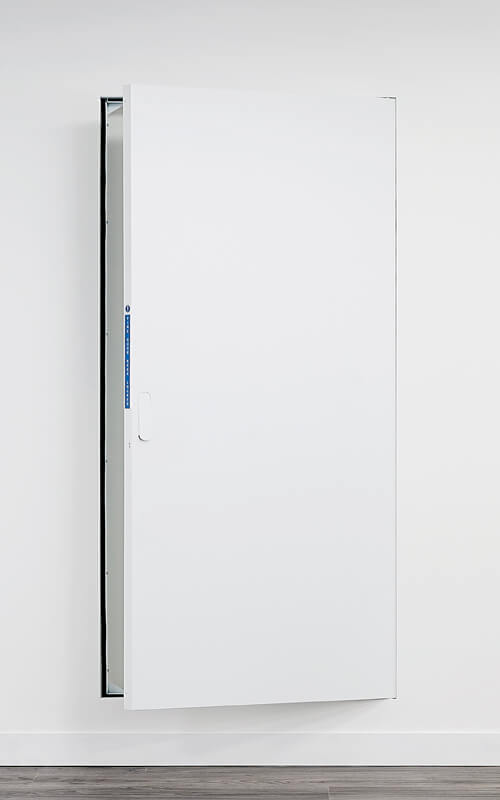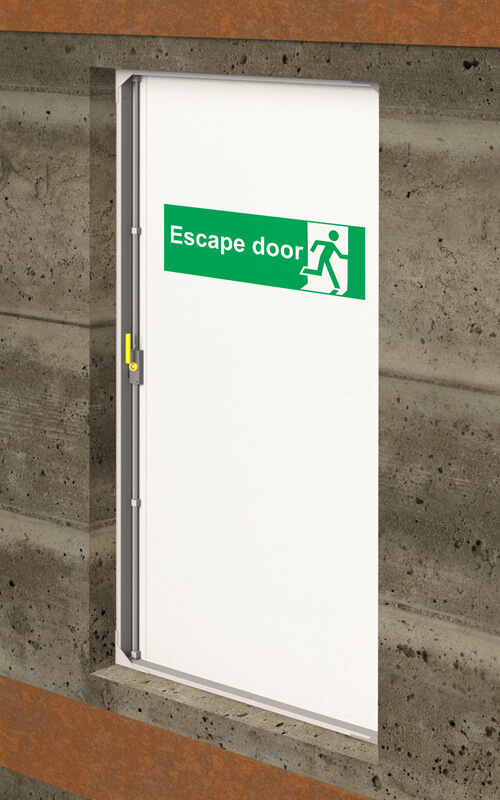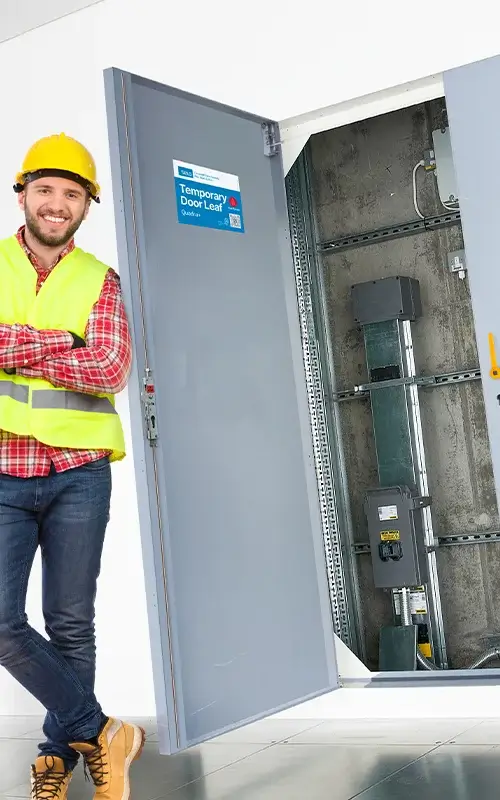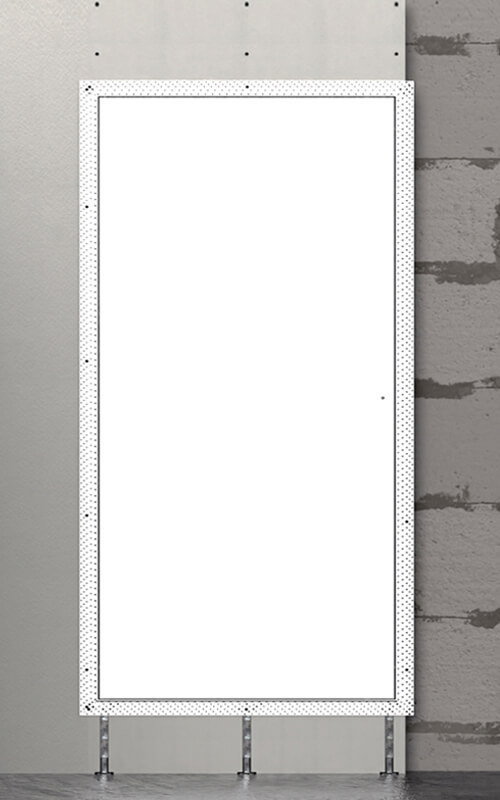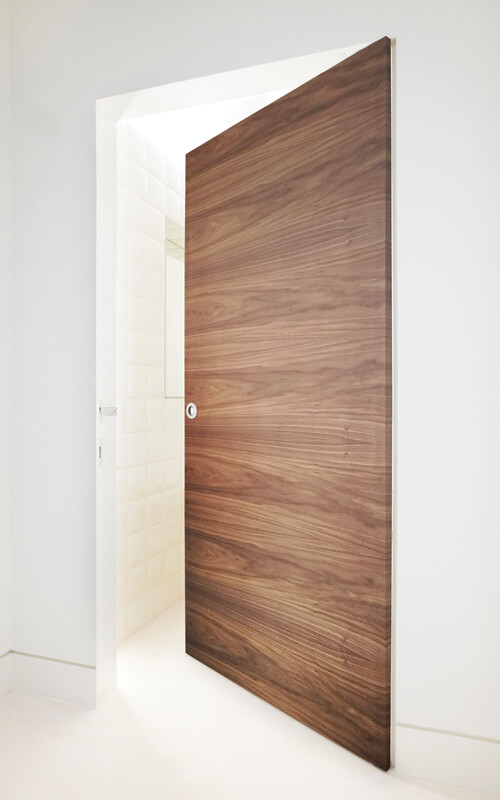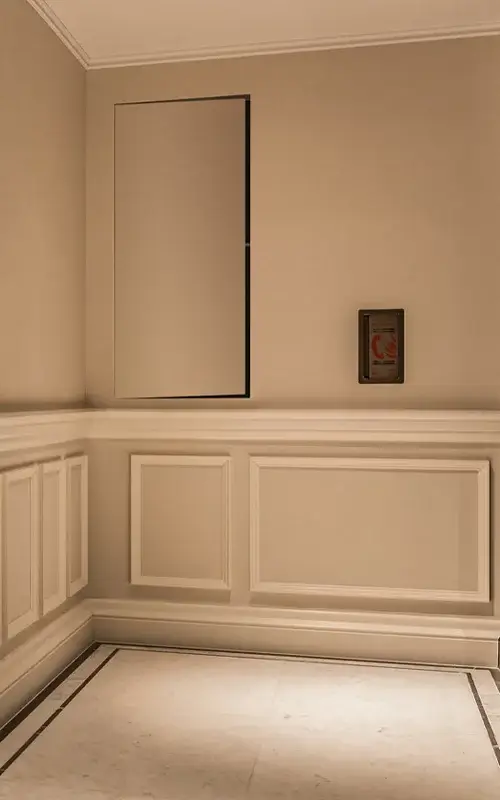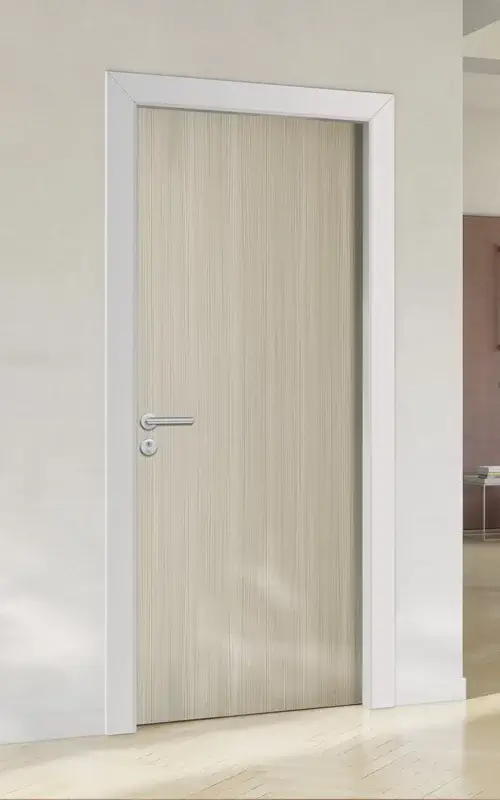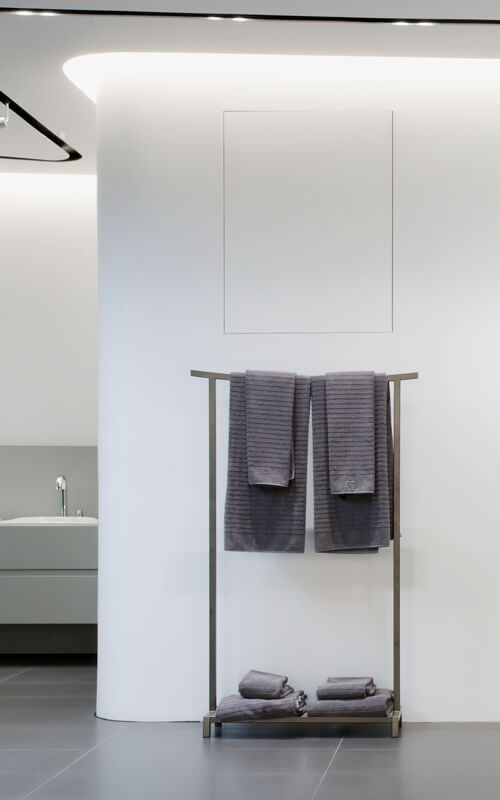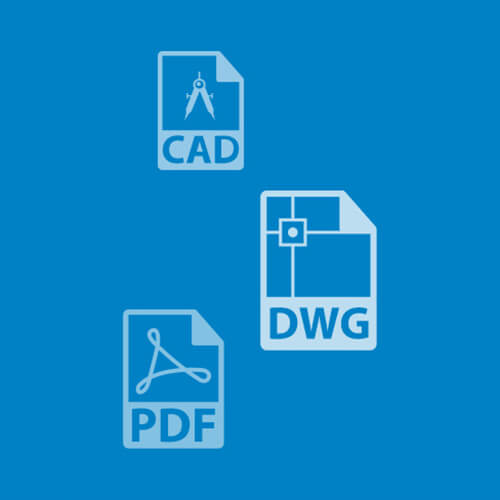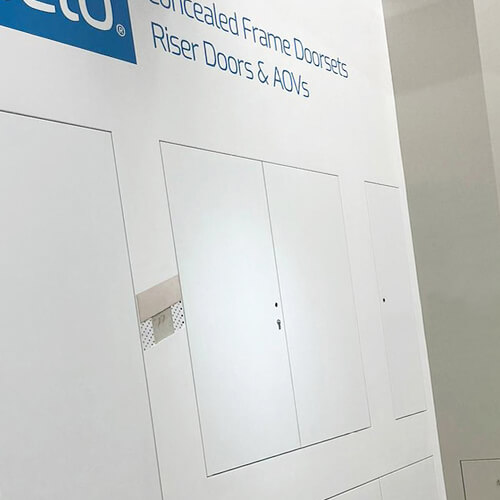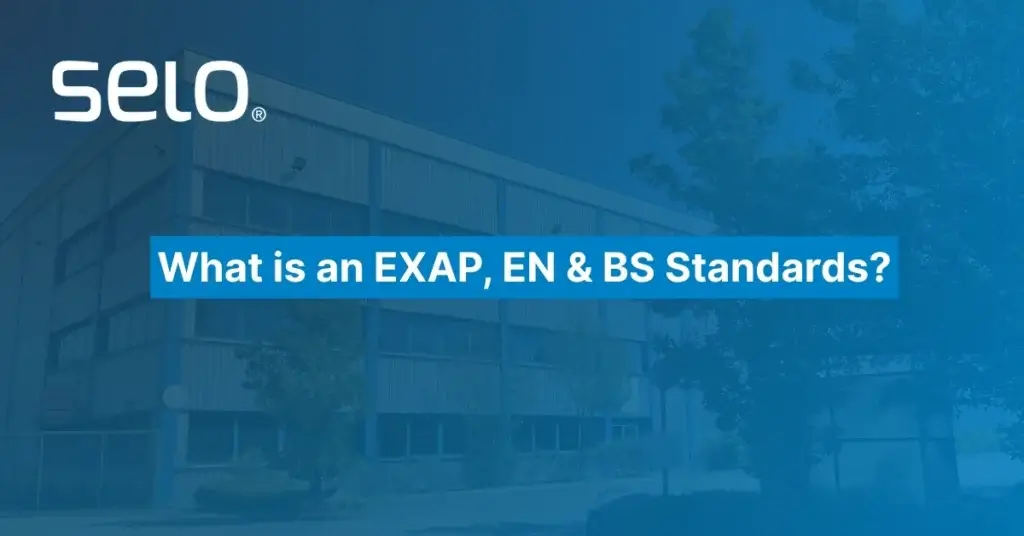
Specifying the right door for your project is complex, especially when navigating fire safety. If you’re a developer, architect, or specifier, terms like EXAP, EN, BS and BS EN can be confusing. This guide breaks down what they mean, how they’re used, and why they matter in real-world compliance and safety, offering clarity on what BS standards, EN certifications, and EXAP frameworks truly involve.
Understanding what an EXAP, BS and EN standard is critical for the safety and compliance of your project. In this blog, we are going to explain the difference to help you achieve a compliant door solution for your next project.
An EXAP is extended field of application, which is a set of rules that allows for manufacturers to use existing fire test evidence instead of conducting a new fire test to demonstrate the product’s fire resistance. EXAPs are used to demonstrate compliance of fire safety standards under modified conditions and can provide faster product approvals and reduced testing costs. It is important to note that the product must have passed a fire test under slightly different conditions and are used as an extension of the field of application report.
Traditionally in the UK, building regulations require fire doors to be tested and certified to either BS 476-22 (British standard) or BS EN 1634-1 (European standard). However, this is now changing through a phased approach and by 2 September 2029, only the European Standards will be used for classification of fire performance.
Why Construction Standards Like EXAP, EN and BS Matter
Construction standards are important as they help keep everyone safe, from those working on-site to the occupants inside the building once the project is complete. The Construction Products Green paper states that two thirds of construction products are unregulated, which is a huge risk, and it is highly likely the green paper will turn to legislation to improve construction safety. At Selo, we believe this is a positive change for the industry and something we have been calling for years.
We saw the damage a lack of regulation can cause from the Grenfell disaster. This tragedy has caused major change in the industry and now regulations are becoming more strict and serious consequences for non-compliance.
Whilst fire testing provides evidence and test reports of a products performance when exposed to fire, EXAPs also play an important role in allowing manufacturers to demonstrate safety. EXAPs allow manufacturers to demonstrate fire safety through existing test evidence in slightly modified conditions, without conducting a new fire test. EXAPs provide a process of providing a faster route to market for manufacturers, without compromising on safety.
Even with the availability of EXAPs, manufacturers must first demonstrate their products performance in the event of a fire. This is important, as it provides architects and developers with a test report of how the product will perform in a fire, and in the case of a door, the wall construction it has been tested in, allowing specifiers to design a safe and compliant solution. The first standard written was The British standards (BS) which were written back in 1987 and, at the time, provided a standard for fire safety best practice. The BS standards have provided a consistent method for measuring fire performance for years, which has helped bring safer products to the market.
Construction standards are vital for safety, so it is important for these standards to be kept up to date, as knowledge of fire and materials develops over time. The improved knowledge of fire safety and how to test and measure has driven a change in testing standards. As of 2 September 2029, only the EN standards can be used to define performance.
So why the move to the EN standards and what are they? The EN standards are the European standards are important as the EN standards provide a more modern and evidence-based standard and an improvement on the BS standards. EN standards such as BS EN1634-1 has defined rules and requires more arduous testing than BS 476-22 and leads into working with other European Standards. EN standards now provide an evidence-based test to measure performance of fire resistance. Many door manufacturers have already been testing their products to the EN standards but by moving all fire tests to EN 1634-1 it will improve safety on-site and in buildings, which is why construction standards matter.
Understanding EN and BS Standards in Construction
EN standards are set across Europe. When the UK adopts one, it becomes a BS EN, a British version of that European standard. From 2029, only EN standards will be the only standard used to measure fire performance.
Categories of Standards in the Construction Industry
Here are some of the categories of standards within the construction industry and their definitions.
<h3>Testing standards <h/3>
<h4> BS 476-22 </h4> – is the British standard that outlines methods of determining fire resistance of non-loadbearing elements of construction, such as doors. All of the parts of BS476 for both reaction and resistance to fire in Approved Document B have been removed. Only the EN standards can be used to define performance from the end of the 5-year coexistence period which is 2 September 2029.
<h4> BS EN1634-1 </h4> – is the European standard that outlines for determining the fire resistance for doors and shitter assemblies. After the end of the coexistence period which is 2 September 2029, the EN standards will be used to define performance.
<h3>Performance standards </h3>
<h4> BS EN13501-1</h4> – is the European standard for the fire classification of construction products and building elements, including floorings and linear pipe thermal insulation products. The assessment evaluates heat, smoke and ignition time.
<h4> BS EN13501-2 </h4> (link to product) – is the European standard for the fire classification of construction products and building elements, using data from fire resistance tests, excluding ventilation services.
<h3> Application standards </h3>
<h4> EXAP </h4> – the EXAP meaning is an Extended Field of Application which are a set of standards that allows existing test evidence of a product to be extended to similar conditions that have not been tested.
<h4> BS EN15269 </h4> – is the European standards for the extended application of fire resistance and/or smoke control test results for door, shutter and openable window assemblies, including their elements of building hardware. It provides rules for extending the application of test results from existing fire resistance tests, allowing for wider use of test data in different conditions.
<h3> Rating systems </h3>
<h4> Fire Door Standards </h4> – the British standard for fire rating classifications of performance on how long a door can resist a fire. The required ratings are commonly FD30, FD60 or FD120 to indicate how many minutes a doors structure on integrity will resist the passage of fire. In the UK, building regulations require fire doors to be tested and certified to either BS 476-22 or EN 1634-1. However, the doors tested to BS 476-22 don’t include smoke so further testing is required.
<h4> E Fire Resistance Rating </h4> – The European standard that defines (E) Integrity also indicates how many minutes a doorset/assembly will resist the passage of fire structures for integrity in minutes. The required ratings are commonly E30, E60 or E120.
<h4> EI Fire Resistance Rating </h4> – The European standard that defines (E) Integrity and (I) Insulation also indicates how many minutes a doorset/assembly will resist the passage of fire structures for integrity and insulation in minutes. The required ratings are commonly EI30, EI60 or EI120. E/EI fire rated doors are classified in accordance with BS EN 13501-2 and where required the insulation is included to prevent temperature rising on the unexposed side of the door. However, the doors tested to EN 1634-1 don’t include smoke, so further testing is required.
How Selo Ensures Compliance with Industry Standards
At Selo, we endeavour to align with industry standards to provide safe solutions for building occupiers, and compliance and ease of specification for architects.
In 2024, we spent 1,936 fire testing products and this is likely to increase in 2025 as we continue to invest heavily in our research and development programme and continue to bring innovative new products to the market, such as FumaCE.
If you have any questions about fire door compliance, or need specification support on your project, reach out to us today 020 3880 0339 | sales@selo.global.


